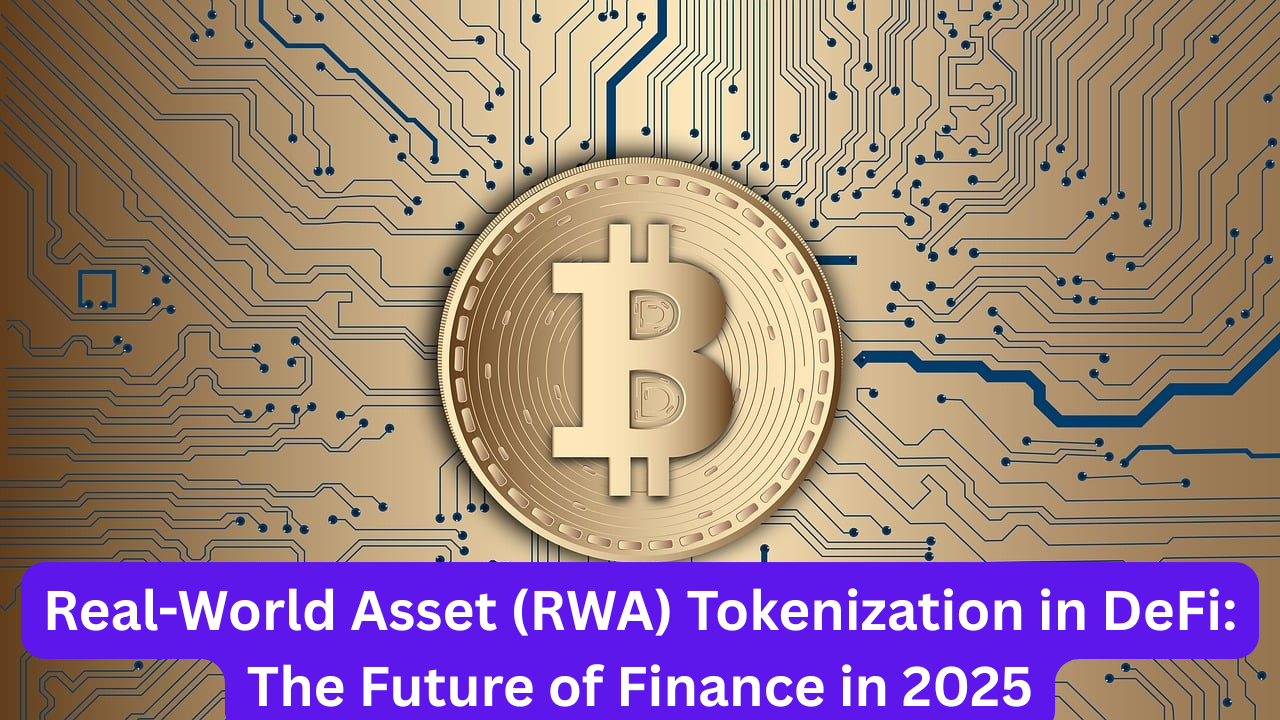
What Is Real-World Asset (RWA) Tokenization?
Real-World Asset (RWA) tokenization is the process of converting physical or traditional financial assets into digital tokens that live on the blockchain. These assets can include:
- Real estate
- Treasury bonds
- Artwork
- Commodities (e.g., gold, oil)
- Intellectual property
- Invoices and revenue streams
The digital tokens created are secured by smart contracts, enabling fractional ownership, easier trading, and improved liquidity.
Why Is RWA Tokenization Exploding in 2025?
In 2025, RWA tokenization is among the fastest-growing verticals in decentralized finance (DeFi). The convergence of traditional finance (TradFi) and DeFi has made RWA the cornerstone of on-chain adoption by institutions.
Key Drivers of RWA Growth:
- Regulatory clarity: Governments in the U.S., EU, and Asia are offering frameworks for tokenized securities and digital bonds.
- Institutional adoption: BlackRock, Franklin Templeton, and HSBC have already launched or invested in tokenized assets.
- Yield diversification: DeFi users seek more stable, real-world yields beyond crypto-native volatility.
Top Use Cases of RWA in DeFi
1. Tokenized Real Estate
Property owners can tokenize buildings or land, enabling investors to buy shares in real estate via blockchain platforms like RealT or Tangibl.
SEO Tip: Tokenized real estate can generate consistent traffic with “how to invest” guides.
2. Tokenized Bonds and Treasuries
Platforms like Ondo Finance and Maple Finance allow users to earn yield from U.S. treasury-backed tokens — ideal for users seeking stable returns in volatile markets.
3. Commodities on Chain
Projects like Cache Gold (CGT) and PAXG (Paxos Gold) allow users to buy blockchain-represented gold, fully backed by vault holdings.
4. Revenue-Based Financing
Protocols such as Goldfinch and Credix tokenize real-world loans and distribute interest payments to DeFi lenders.
Benefits of Tokenizing Real-World Assets
✅ Increased Liquidity
Tokenization makes illiquid assets like real estate or private equity tradable 24/7 on secondary markets.
✅ Fractional Ownership
Investors can buy small portions of expensive assets (e.g., $100 into a $1M property), democratizing access.
✅ Global Access
Borderless investment opportunities open up through DeFi protocols, reducing barriers imposed by local regulations.
✅ Transparency & Security
Blockchain ensures transparent ownership records, auditability, and tamper-proof transactions through smart contracts.
Top RWA Tokenization Projects to Watch in 2025
| Project Name | Category | Key Features |
|---|---|---|
| Ondo Finance | Tokenized Treasuries | Institutional-grade tokenized bond offerings |
| Centrifuge | Asset Financing | On-chain real-world loans for SMEs |
| Maple Finance | Credit Markets | Tokenized private credit and lending pools |
| RealT | Tokenized Real Estate | Property tokenization in U.S. housing market |
| Goldfinch | Emerging Markets | Crypto-backed lending to developing countries |
Internal Linking Opportunity:
Once you publish reviews or comparisons on these platforms, link to them from here to boost internal SEO.
Challenges in RWA Tokenization
❌ Regulatory Hurdles
Despite progress, cross-border laws for securities remain fragmented and can slow down adoption.
❌ Asset Verification
Ensuring that a tokenized asset is actually backed by the underlying physical good requires rigorous audits and trust in custodians.
❌ Lack of Liquidity in Early Markets
Some RWA tokens still lack active trading markets, causing pricing inefficiencies.
The Future of RWA Tokenization in DeFi
The future of RWA tokenization in DeFi looks promising, with several anticipated developments:
🌐 On-Chain Credit Scores
New protocols are developing decentralized identity and credit scoring systems to bring more real-world borrowers into DeFi.
📱 Mobile Access and CBDCs
With CBDCs and mobile wallets gaining traction, tokenized RWA investments may soon be accessible directly from government-backed platforms.
🤝 Partnerships Between Banks and DeFi
Banks are forming partnerships with DeFi protocols to bridge traditional financial products with the blockchain world.
Example: JP Morgan’s use of blockchain for collateral settlement.
How to Invest in RWA Projects Safely
- Do Your Research (DYOR): Check if the token is backed by real-world assets with transparent auditing.
- Use Trusted Platforms: Stick to projects with regulatory approval or institutional backing.
- Evaluate Risk/Return: Compare RWA yields vs. DeFi-native staking rewards for balance.
Conclusion
Real-World Asset tokenization in DeFi is redefining how value is stored, transferred, and invested. By bridging the physical and digital worlds, RWA projects are unlocking trillion-dollar markets on the blockchain.
As regulatory clarity grows and infrastructure improves, RWA in DeFi will become one of the most lucrative and transformative sectors in crypto. Whether you’re a retail investor or institution, this is a trend you can’t afford to ignore in 2025.